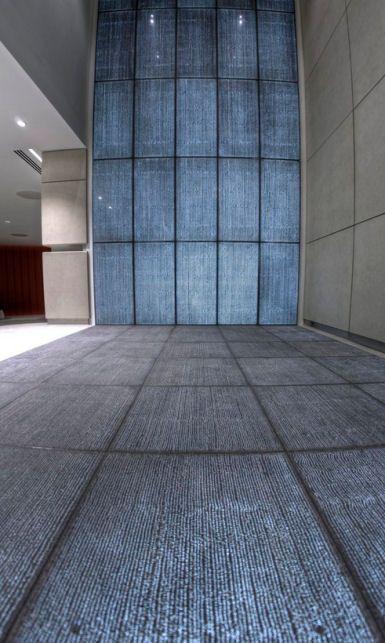According to the Regional Research Reports, the global lightweight concrete market size is projected to be a million USD in 2022 to multi-million USD in 2033, exhibiting a CAGR of 7.4% from 2023 to 2033.
The research provides in-depth details on the market's present analysis and future growth expansion. The report offers a thorough analysis of the global lightweight concrete market by carefully evaluating a variety of market-relevant factors, including key drivers, growth inhibitors, opportunities for the future, regional market conditions, recent advancements, the regulatory environment, and a detailed analysis of the top players and organizations dominating the industry.
Request Sample Copy of this Report: https://www.regionalresearchreports.com/request-sample/lightweight-concrete-market/CM-1428?utm_source=free&utm_medium=Harsh
The research also includes profiles of the 25 major market participants active in the global lightweight concrete market. The research offers several insights and details on the firms, their leaders, their financials, their business strategies, as well as the innovative steps they have taken to gain a monopoly on the global lightweight concrete market.
Key Market Segments:
The report segments the global market into type and application.
By Type (Sales, Growth Rate, USD Million, 2018-2033)
- Lightweight Aggregate Concrete
- Aerated Concrete
- No Fines Concrete
By Application (Sales, Growth Rate, USD Million, 2018-2033)
- Civil Construction
- Industrial Construction
- Infrastructure Construction
- Others
Regional Outlook (Sales, Growth Rate, USD Million, 2018-2033)
- North America (the United States, Canada, and Mexico)
- South America (Brazil, Argentina, and Rest of South America)
- Europe (Germany, UK, Italy, France, Spain, and Rest of Europe)
- Asia-Pacific (China, Japan, South Korea, India, Australia & New Zealand, and Rest of Asia Pacific)
- The Middle East and Africa (GCC Countries, Egypt, Saudi Arabia, South Africa, and Rest of MEA)
Direct Purchase Report: https://www.regionalresearchreports.com/buy-now/lightweight-concrete-market/CM-1428?opt=2950&utm_source=free&utm_medium=Harsh
Major Key Players:
The report offers details about these companies, including the product overview, financial and yearly performance, strategic plans & developments, product line, and SWOT analysis.
- Cimpor
- SCG
- Cemex
- Holcim
- HeidelbergCement Group
- Lafarge
- CRH
- Buzzi Unicem
- Italcementi
- Votorantim
- U.S. Concrete
- China Resources Cement
- Sika
- Hanson
Request For Report Discount: https://www.regionalresearchreports.com/request-for-special-pricing/lightweight-concrete-market/CM-1428
(Note: The list of the key market players can be updated with the latest market scenario and trends)
Composition
- Cement: Standard Portland cement is usually used.
- Aggregates: Lightweight aggregates such as expanded clay, shale, slate, or pumice. In some cases, recycled materials like expanded polystyrene beads or perlite may be used.
- Water: The water-cement ratio is carefully controlled.
- Admixtures: Chemical admixtures like air-entraining agents, superplasticizers, and water reducers to enhance workability and performance.
- Foaming Agents: In foamed concrete, foaming agents are used to introduce air bubbles.
Types of Lightweight Concrete
- Lightweight Aggregate Concrete: Uses lightweight aggregates.
- Foamed Concrete: Incorporates a foaming agent to create a cellular structure.
- Aerated Concrete: Uses chemical reactions to form gas bubbles within the concrete mix.
Properties
- Density: Typically ranges from 800 to 2000 kg/m³, compared to conventional concrete's 2400 kg/m³.
- Thermal Insulation: Enhanced insulation properties due to air voids and lightweight aggregates.
- Sound Insulation: Good acoustic properties.
- Workability: Easier to handle and place due to lower weight.
- Compressive Strength: Generally lower than conventional concrete but can be optimized for specific applications.
- Durability: Resistance to freeze-thaw cycles and fire, depending on the type of lightweight concrete.
Advantages
- Reduced Dead Load: Decreases the weight on structural elements, leading to cost savings in structural design.
- Improved Insulation: Better thermal and acoustic properties.
- Ease of Handling: Easier to transport and handle, especially in high-rise construction.
- Eco-Friendly: Potential use of recycled materials and reduction in raw material usage.
Request For Report Description: https://www.regionalresearchreports.com/table-of-content/lightweight-concrete-market/CM-1428
Applications
- Building Construction: Used in non-load-bearing walls, partitions, and insulation layers.
- Roofing and Flooring: Lightweight concrete is used in screeds, roof decks, and floor slabs.
- Bridge Decks: Reduces the overall weight of bridge decks.
- Precast Concrete Elements: Used in the production of lightweight precast panels and blocks.
- Marine Structures: Suitable for floating structures due to its buoyancy.
- Pavements and Roadways: Used in lightweight fill for road construction.
Contact US:
Regional Research Reports (RRR)
414 S Reed St, Lakewood,
Colorado, 80226, USA
USA: +1 (646) 663–5829 | +91 702 496 8807
Email: sales@regionalresearchreports.com
Web: https://www.regionalresearchreports.com/

